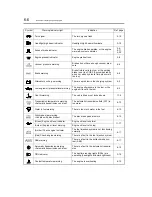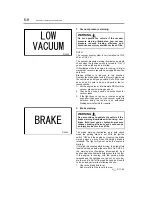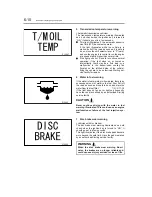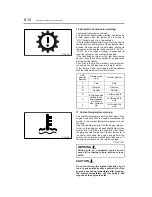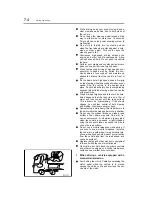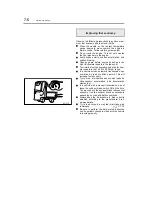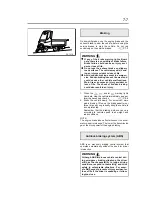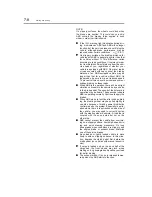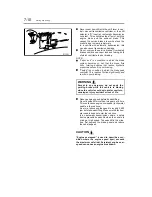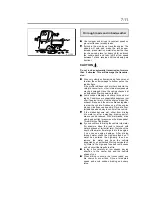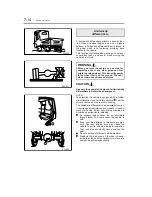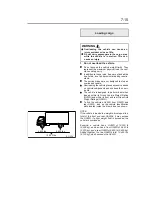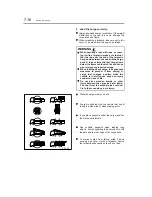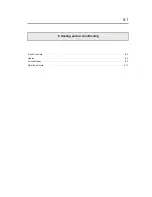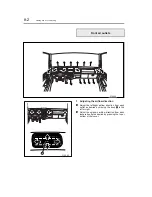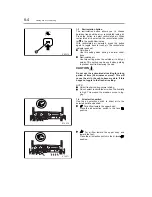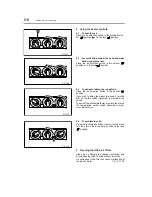
7-8
Starting and driving
NOTE:
On slippery surfaces, the wheels could lock when
the brakes are applied. This could cause a skid.
ABS controls the braking force applied to each
wheel in order to minimize skids.
•
If the
warning light illuminates during driv-
ing, it indicates an ABS fault. ABS will no longer
function, but the service brakes can still stop the
vehicle, although brake performance may be
reduced under certain conditions.
P. 6-11
•
On slippery surfaces, the braking distance for
vehicles with ABS is generally shorter than that
for vehicles without it. This difference varies
according to road conditions. It is always impor-
tant to maintain sufficient distance from the vehi-
cle ahead of you, regardless of whether your
vehicle is equipped with ABS. On gravel roads,
or roads covered with heavy snow, the braking
distance of an ABS-equipped vehicle may be
longer than that for a vehicle without ABS. On
these roads, be sure to drive at reduced speed.
To prevent collisions, avoid quick maneuvers or
sudden braking on these roads.
•
When ABS is in operation, there will be a slight
vibration noticeable in the vehicle body and also
in the brake pedal. The sound of the solenoid in
operation may be heard. These sounds indicate
ABS is operating normally. Continue to apply the
brakes.
•
When ABS starts to function after sudden brak-
ing, the steering wheel may be pulled slightly to
one side because of braking power distribution
control made by the system. Especially in a situ-
ation where there is less traction on one side of
the vehicle, you may need to correct direction
with the steering wheel.
Example:
A road that is
covered with ice on one side but not on the
other side.
•
ABS cannot prevent the vehicle from overturn-
ing on a slippery surface. Avoid high-speed driv-
ing and quick steering maneuvers. On long
downgrades when conditions are slippery, use
the engine brake or exhaust brake. Minimize
use of the service brakes.
•
An unloaded or lightly loaded vehicle is more
likely to skid on slippery surfaces. In this situa-
tion, depress the clutch pedal first, before the
brake pedal (on vehicles with manual transmis-
sion).
•
If cargo is loaded only on the back half of the
cargo bed, the front wheels may lock. when
braking on long downgrades. Equalize your load
for better braking.
•
The exhaust brake, if in use, is released tempo-
rarily when the ABS starts to function.
Summary of Contents for 360
Page 13: ...2 1 Locations in cab 2 2 Locations outside cab 2 4 2 Warning labels ...
Page 16: ...2 4 Warning labels Locations outside cab Z12496 ...
Page 19: ...2 7 Warning labels 30 gallon 113 liter fuel tank Z12494 ...
Page 27: ...4 1 Seats 4 2 Seat belts 4 4 Steering wheel 4 7 4 Seat and steering wheel adjustments ...
Page 204: ...14 1 Maintenance schedule 14 2 Lubrication schedule 14 6 14 Maintenance schedule ...
Page 210: ...15 1 15 Alphabetical index ...

